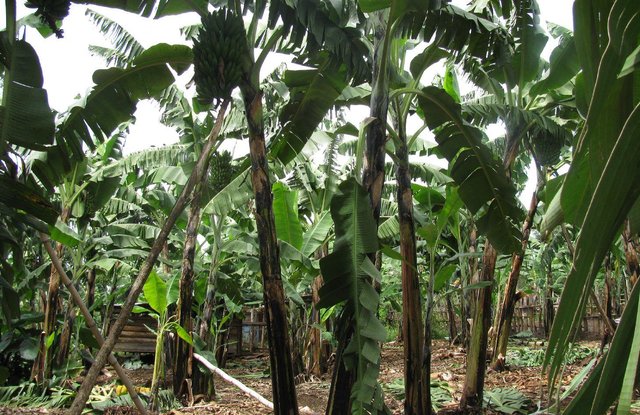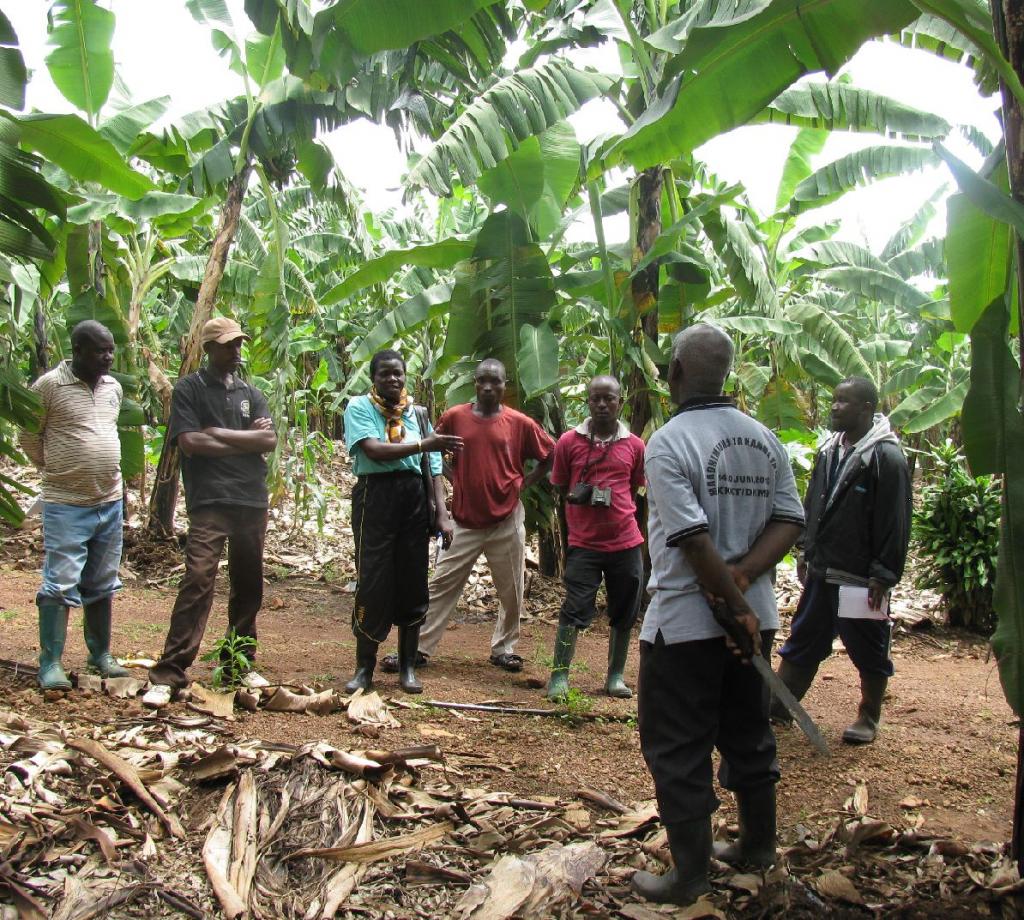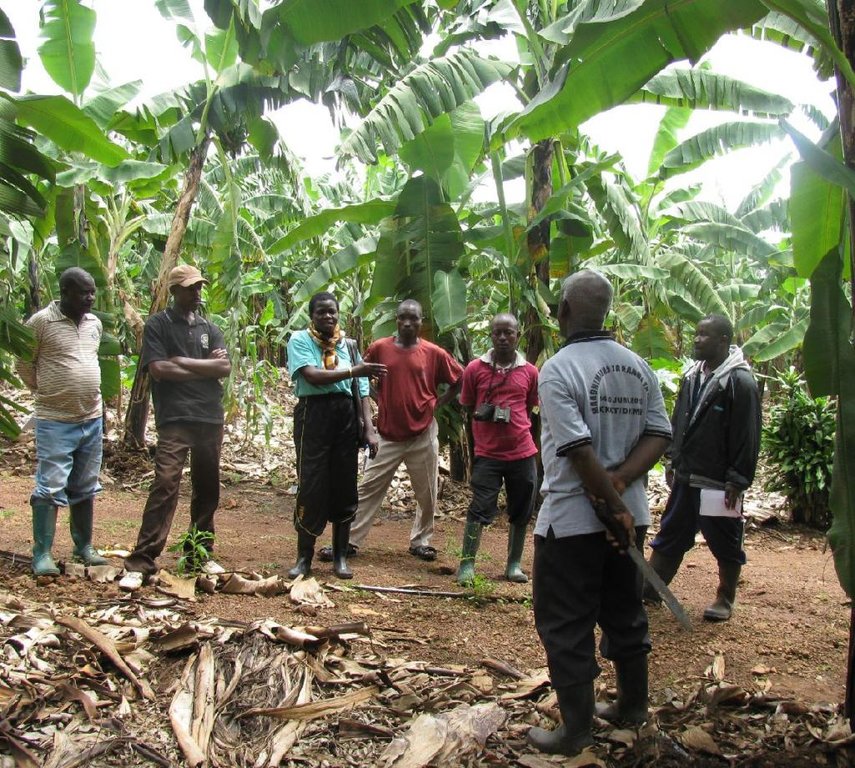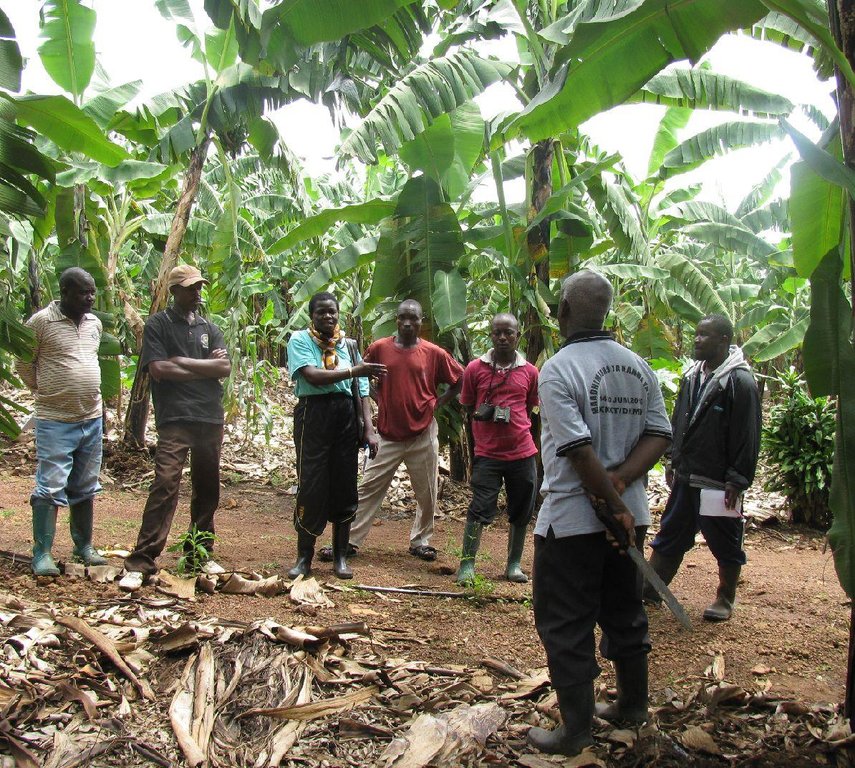Integrated farm knowledge adoption [坦桑尼亚联合共和国]
- 创建:
- 更新:
- 编制者: Jasson Rwazo
- 编辑者: –
- 审查者: Fabian Ottiger
Tweyambe
approaches_2677 - 坦桑尼亚联合共和国
查看章节
全部展开 全部收起1. 一般信息
1.2 参与方法评估和文件编制的资源人员和机构的联系方式
1.3 关于使用通过WOCAT记录的数据的条件
(现场)数据是什么时候汇编的?:
11/07/2012
编制者和关键资源人员接受有关使用通过WOCAT记录数据的条件。:
是
1.4 SLM技术问卷的参考

Improved Kibanja cropping system [坦桑尼亚联合共和国]
This is a traditional banana and coffee complex cropping system interplanted with annual crops, trees,shrubs, vegetables and other diverse plants of social economic importance.
- 编制者: Jasson Rwazo
2. SLM方法的描述
2.1 该方法的简要说明
The way and means through which a performing farmers adopt and use a combination of indigenous and scientific to maximaze production.
2.2 该方法的详细说明
该方法的详细说明:
Aims / objectives: To adopt and combine indigenous (traditional) and Scientific knowledge in Kibanja system to improve farm productivity through soil and water use efficiency.
Methods: Continuous adoption of indigenous knowledge through story telling and experience
Adoption of technical knowledge extension officers, knowledgeable farmers, projects and research agencies
Implementing the adopted knowledge to the farm
Stages of implementation: Area identification
Area planned phased and rehabilitation and mitigation
Continuous monitoring and supervision to prevent degradation
Introduce small and large stock for manure production
Role of stakeholders: Land user: Promote and use the technology
Community:Maine implementor of the technology,Source of labour
Extension and research:Provision of technical advise
Financial institution for financial capital support
Clan/Family: Family labour
Other important information: Though land ownership is through customary law, but approach is used by both gender, all family members benefit equally from the use of the approach.
Application of this approach needs integrative and proper conceptual understanding of both indigenous and
2.3 该方法的照片
2.5 采用该方法的国家/地区/地点
国家:
坦桑尼亚联合共和国
区域/州/省:
Kagera
有关地点的进一步说明:
Missenyi
2.7 方法的类型
- Integrated knowledge adoption(traditional,innovative,project)
2.8 该方法的主要目的/目标
The Approach focused mainly on SLM with other activities (Improvement of house hold food security and income)
To improve agricultural production and productivity
Sustainable utilization of land and water
To minimize loss during adverse condition (drought/Wind)
To improve house hold food security,income and livelihood
The SLM Approach addressed the following problems: Low agricultural production
Inadequate complementary use of indigenous and technical knowledge
Poor livelihood and income
2.9 推动或妨碍实施本办法所适用的技术的条件
财务资源和服务的可用性/可得性
- 阻碍
Inadequate financial capital
Treatment through the SLM Approach: Phase/Stepwise rehabilitation and expansion
Introducing saving and credit scheme through village bank
了解SLM,获得技术支持
- 阻碍
Lack of proper integration of indigenous scientific knowledge
Treatment through the SLM Approach: Research
工作量、人力资源可用性
- 阻碍
Lab our intensive
Treatment through the SLM Approach: To modernize the technology to allow mechanisation
3. 相关利益相关者的参与和角色
3.1 该方法涉及的利益相关者及其职责
- 当地土地使用者/当地社区
Land user and casual labour
Approach requires capita
- 研究人员
Research institute
如果涉及多个利益相关者,请注明领导机构:
Elders developed the approach through trial and error
3.2 当地土地使用者/当地社区参与该方法的不同阶段
| 当地土地使用者/当地社区的参与 | 指定参与人员并描述活动 | |
|---|---|---|
| 启动/动机 | 自我动员 | Land user and his family |
| 计划 | 自我动员 | Land user and his family |
| 实施 | 自我动员 | Land user and his family |
| 监测/评估 | 自我动员 | Land user and his family |
| Research | 自我动员 | Land user and his family |
3.4 有关SLM技术选择的决策
具体说明谁有权决定选择要实施的技术:
- 仅限土地使用者(自主)
解释:
The land user through his own initiative basing on experience and interaction with other land user and experts decide on the proper technology to use
Decisions on the method of implementing the SLM Technology were made by by land users* alone (self-initiative / bottom-up). The land user through his own initiative basing on experience and interaction with other land user and experts decide on the proper technology to implementation of the technology
5. 融资和外部物质支持
5.1 该方法中SLM组成部分的年度预算
如果不知道准确的年度预算,请给出一个范围:
- 2,000-10,000
注释(例如主要的资助来源/主要捐助者):
Approach costs were met by the following donors: local community / land user(s) (Land user on his own): 100.0%
6. 影响分析和结论性陈述
6.1 方法的影响
该方法是否帮助土地使用者实施和维护SLM技术?:
- 否
- 是,很少
- 是,中等
- 是,支持力度很大
Increase of the size of banana bunch, control of erosion and soil nutrient loss
该方法是否有助于社会和经济弱势群体?:
- 否
- 是,很少
- 是,中等
- 是,支持力度很大
Did other land users / projects adopt the Approach?
- 否
- 是,很少
- 是,中等
- 是,支持力度很大
Did the Approach lead to improved livelihoods / human well-being?
- 否
- 是,很少
- 是,中等
- 是,支持力度很大
Did the Approach help to alleviate poverty?
- 否
- 是,很少
- 是,中等
- 是,支持力度很大
7. 参考和链接
7.1 方法/信息来源
- 实地考察、实地调查
- 与土地使用者的访谈
链接和模块
全部展开 全部收起链接

Improved Kibanja cropping system [坦桑尼亚联合共和国]
This is a traditional banana and coffee complex cropping system interplanted with annual crops, trees,shrubs, vegetables and other diverse plants of social economic importance.
- 编制者: Jasson Rwazo
模块
无模块




